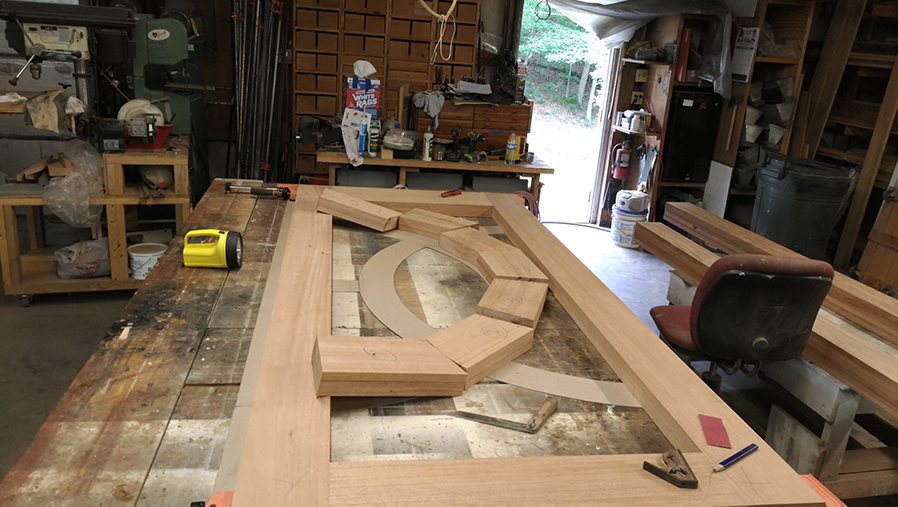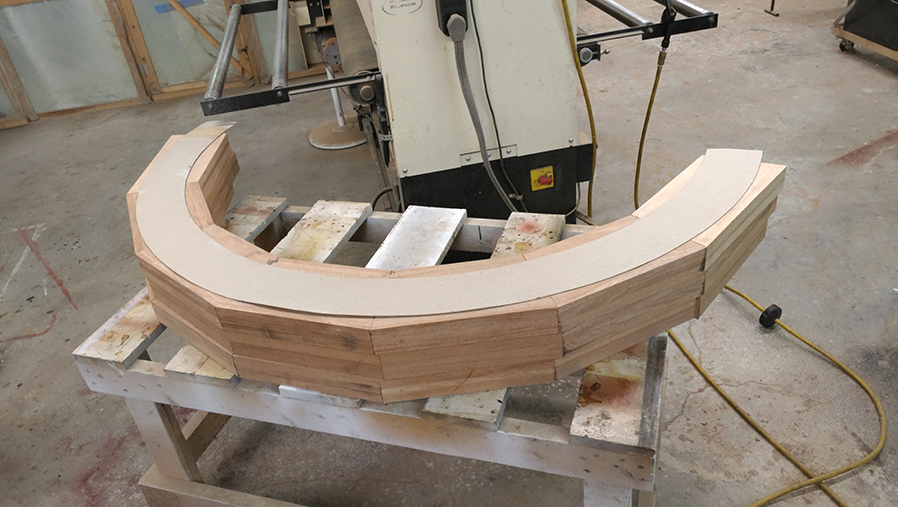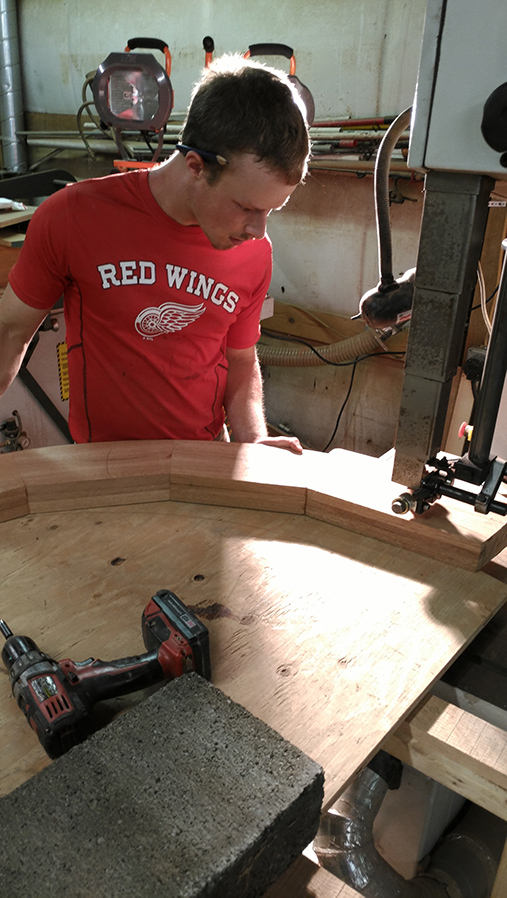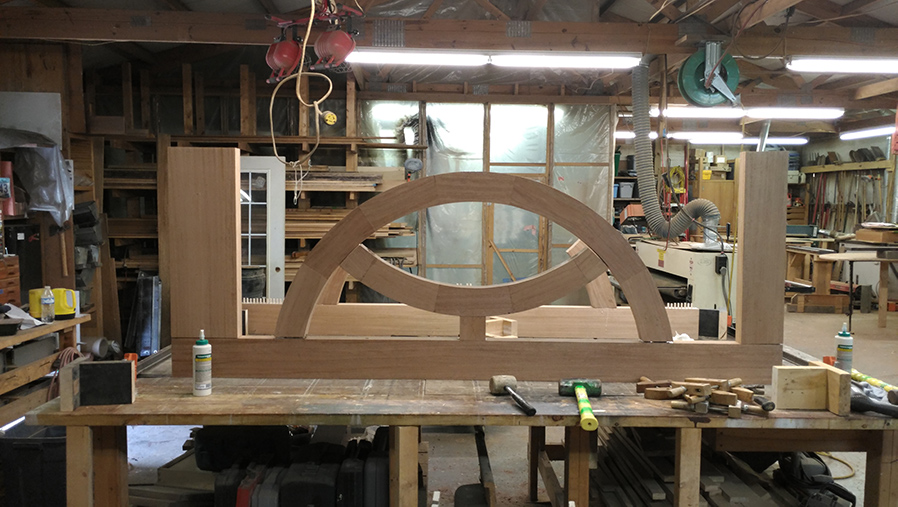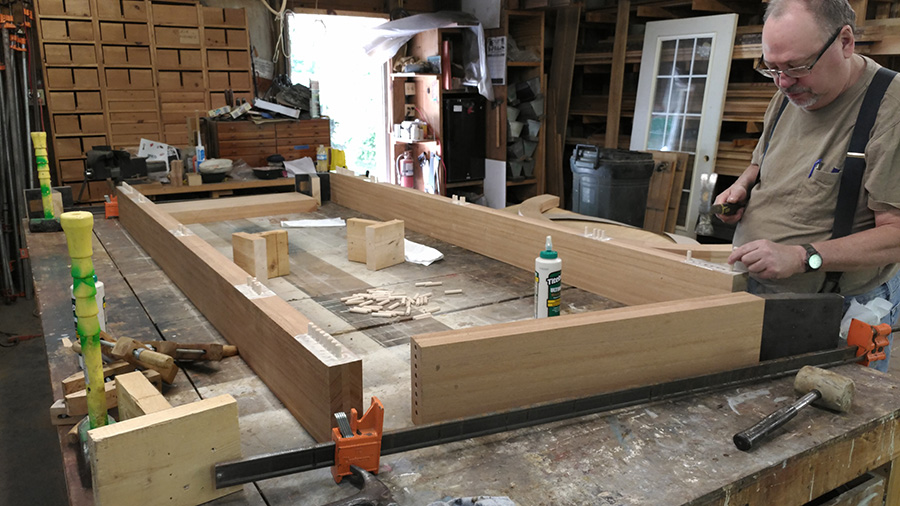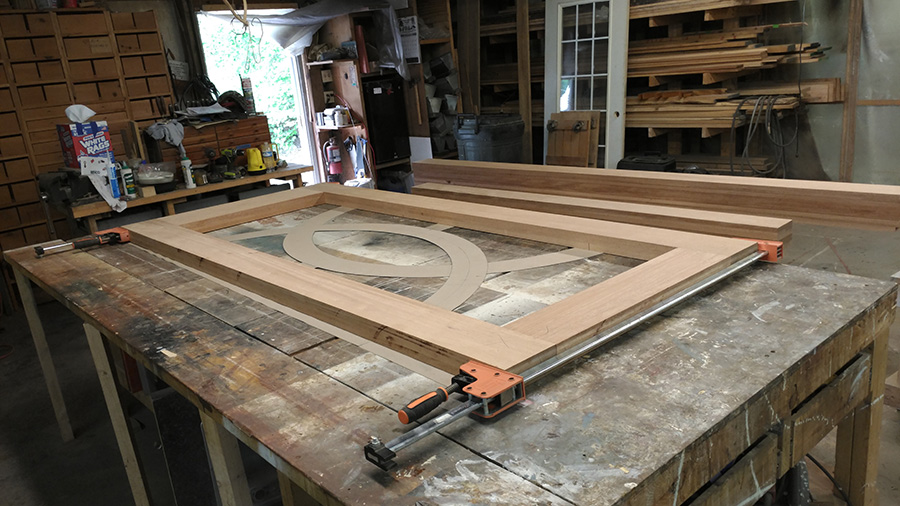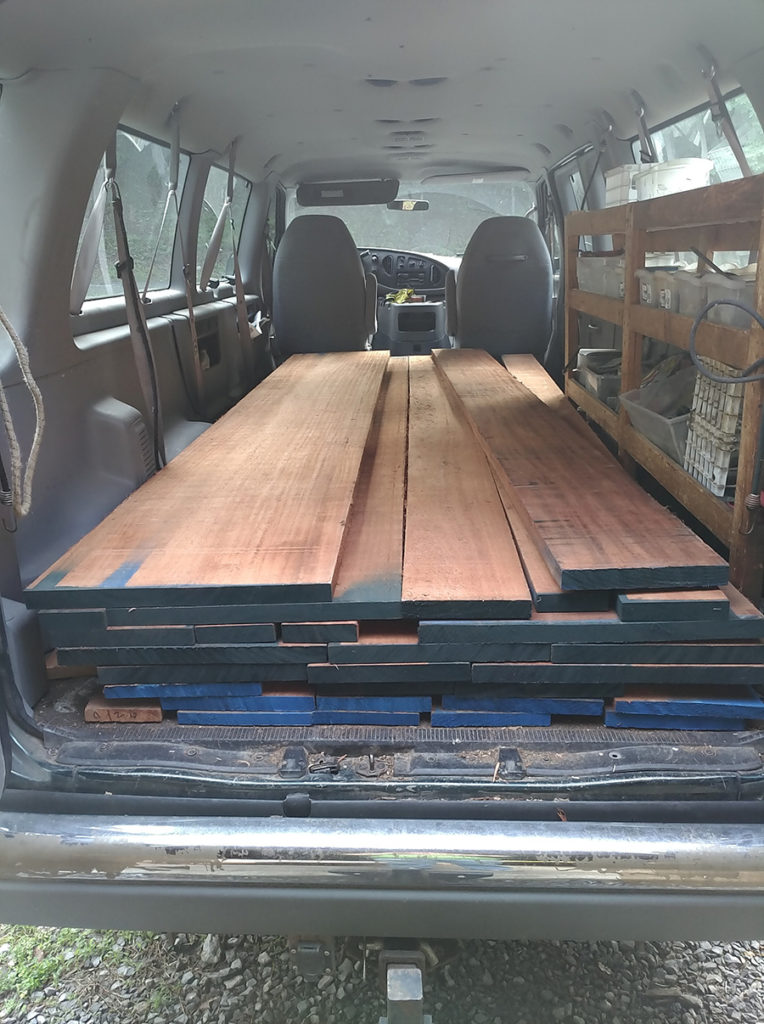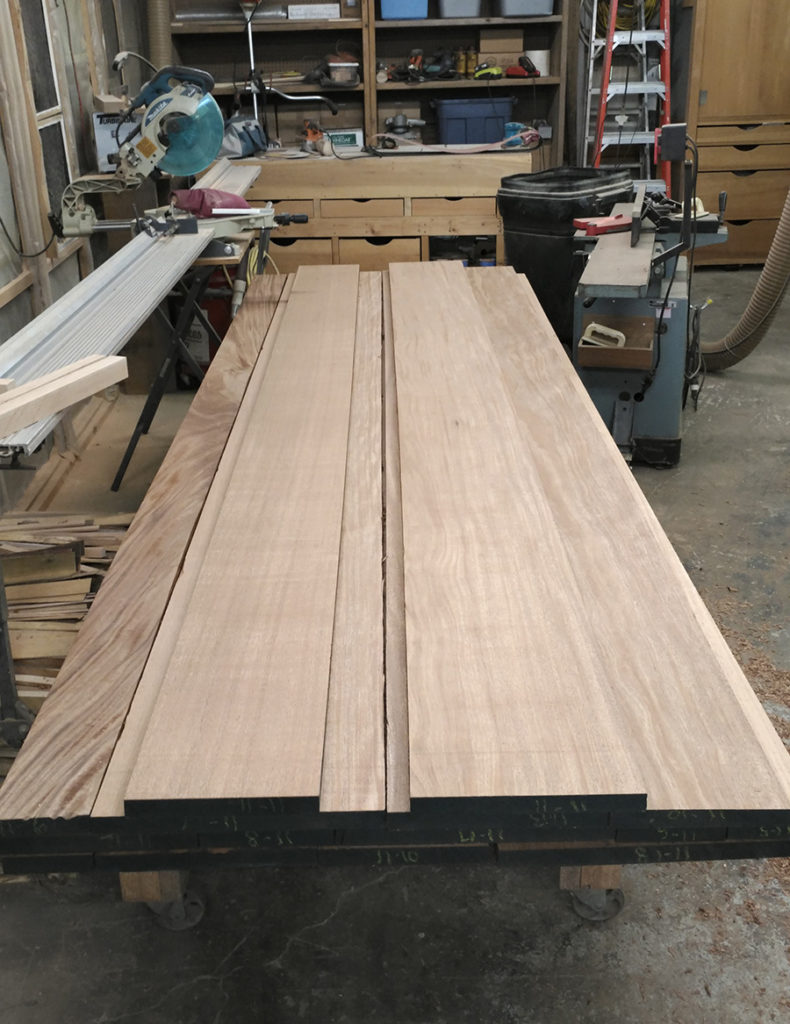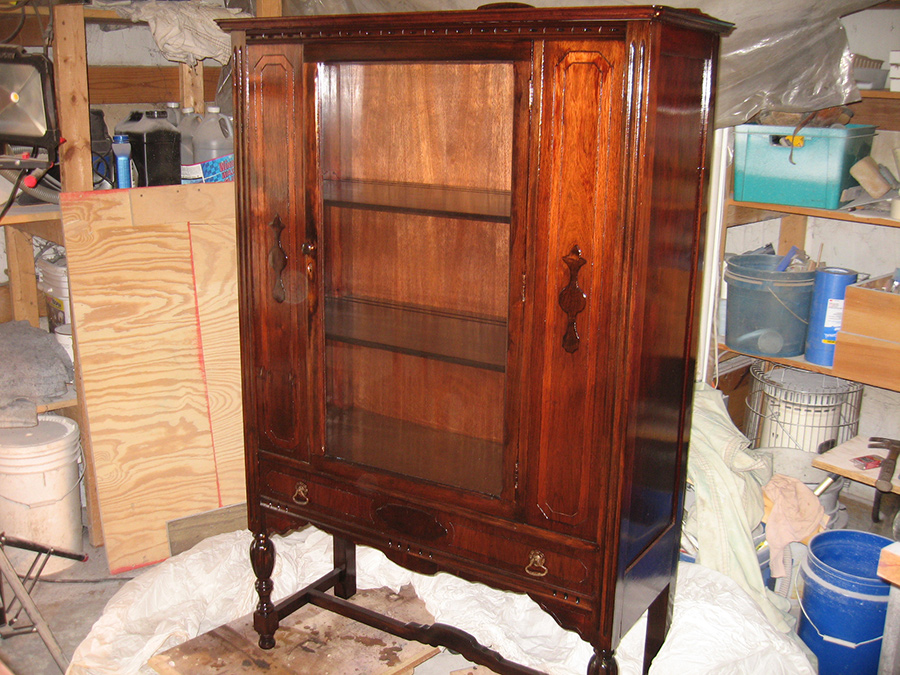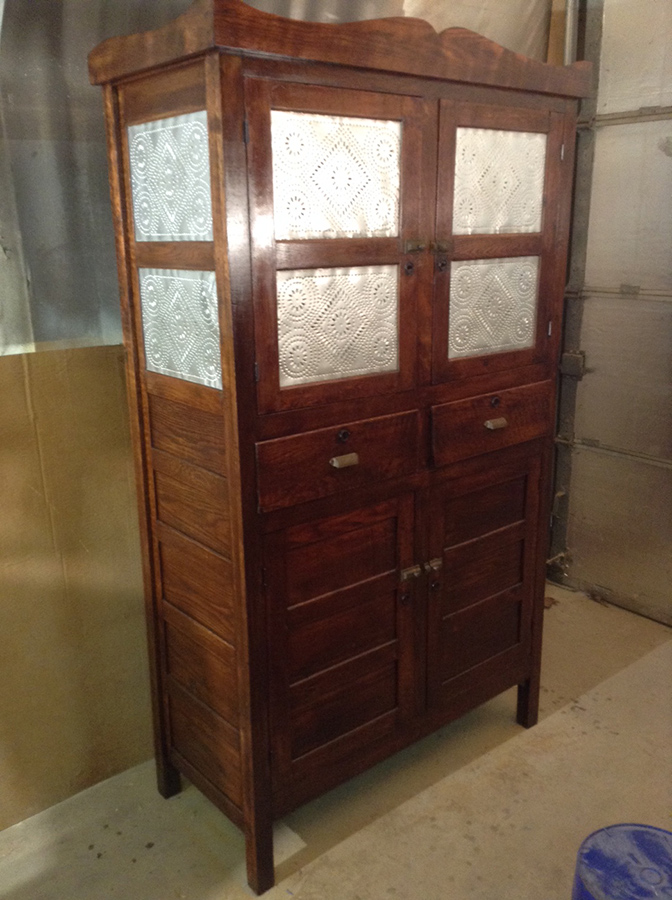Cutting Curves (and Dodging Curve Balls)
I rarely write Shop Notes on Sundays. Sundays are reserved for rest (“Six days you shall do all your labor”). But a couple weeks ago every aspect of life got turned on its head when we were thrown a curve ball in the form of eight (or was it nine?) power outages. Granted a few were only 30-90 minutes in length but others lasted several hours. Everything felt upside down.
Custom Mahogany Curves
I spent our working hours teaching Tim how to build the 56” diameter curved pieces needed to build this set of custom exterior doors. The doors, when installed, will create a big circle in the center with half of the circle in each door. The inside of the circle is made up of odd shaped glass panels.
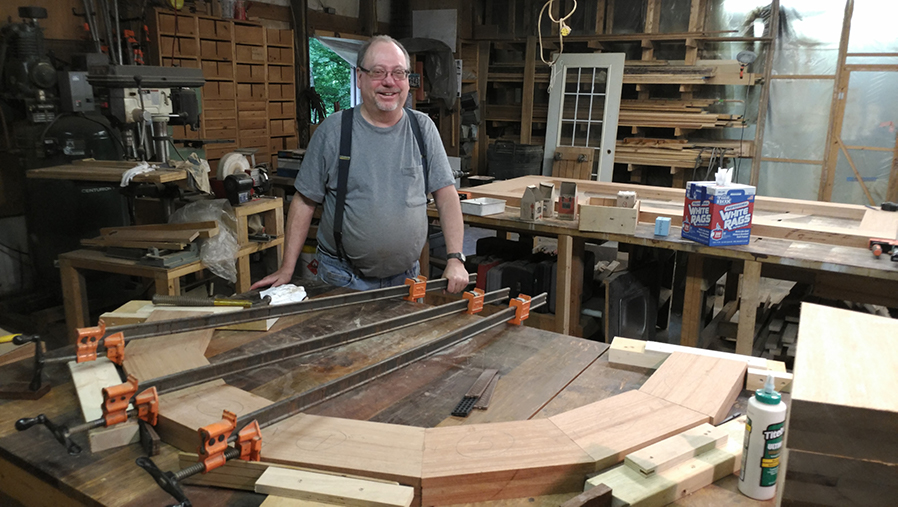
Suspender Man™ working some clamping magic to get a sturdy, tight set of curves before cutting them to their final shape.
Projects & Problem-Solving
This project is complicated to build and I am guessing and by-goshing my way through it as I go. I have allowed Tim to see that is what I am doing. He might as well understand that I sometimes must figure processes out as I go. Every business owner faces this same reality. Nobody knows how to do everything they contract to do.
My apprentice may as well see this side of reality. He ought to understand that owning a small business involves taking risks (measured risks but risks just the same). He needs to see the agonies as well as the easier aspects of owning a business. He will, after all, have to learn how to navigate similar waters when he is the master craftsman.
Growing Our Knowledge & Building the Future
This reminds me of a thought: I want my apprentice to catch the vision for training another person to do his work and take his place in God’s economy. We are not put on earth to simply provide for ourselves. We also need to help other people learn to be masters in God’s kingdom. We must pull other people along teaching them skills and a biblical philosophy needed to take dominion (Genesis 2) and push forward God’s kingdom in every field. This is a distinctively Christian enterprise and practice.
The humanists of our age (or any age) have nothing to match the biblical apprenticeship model. Their idea for teaching is to impart endless gobs of book knowledge, or of personal philosophy disguised as book knowledge, and to take captive the upcoming generation through their “philosophy and vain deceit” (Colossians 2:8). Ours is to disciple people in the means and methods required to take dominion of the earth and to push forward the crown rights of King Jesus. We live for different purposes and achieve those purposes through differing means. Christian discipleship and apprenticeship do not look like the humanist alternative which most of our students labor under. So, I guess, this is where this week’s curves and curve balls conversation has taken us. I do not always know where I am going to land when I launch these conversations.


